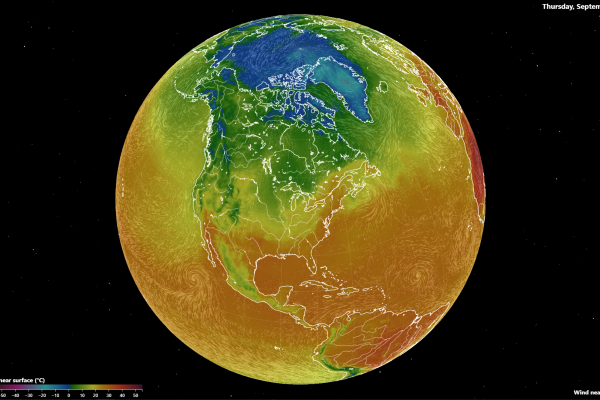Fluid Earth, an Enhanced Exploration Tool

An article in the September 2023 issue of The Physics Teacher, authored by Jason Cervenec, Geddy Davis, Michael T. Gravina, and Daniel Hamilton, shares new features available for Fluid Earth and examples of lessons that may be taught using the web visualization tool.
Fluid Earth was developed five years ago by the Byrd Center's Education and Outreach Group, with collaborators in various departments at The Ohio State University, to address challenges in geoscience education and the need for a new weather and climate visualization tool for youth and the general public.
At the time, Fluid Earth was a digital globe-based tool with several advantages over existing tools. Fluid Earth displayed global weather and climate information, allowed examination of past events, presented multiple weather variables, and included climatological data. It offered a user-friendly experience with actual data sets and various features, including location pinning, a search tool, time-lapse animations, and optimization for different devices and internet connections.
Based on feedback from youth and educators, the team improved Fluid Earth by enhancing location pinning, search capabilities, time-lapse animations, and performance optimization. A wider audience, including high school university students and researchers from various disciplines, have since used the tool.
Fluid Earth is freely accessible online and can be used on various devices. It can also be configured as an interactive weather kiosk for educational spaces. The tool's computer code is available for customization on GitHub. You may download a pdf copy of the article or read the entire September 2023 edition, which focuses on climate change education.
